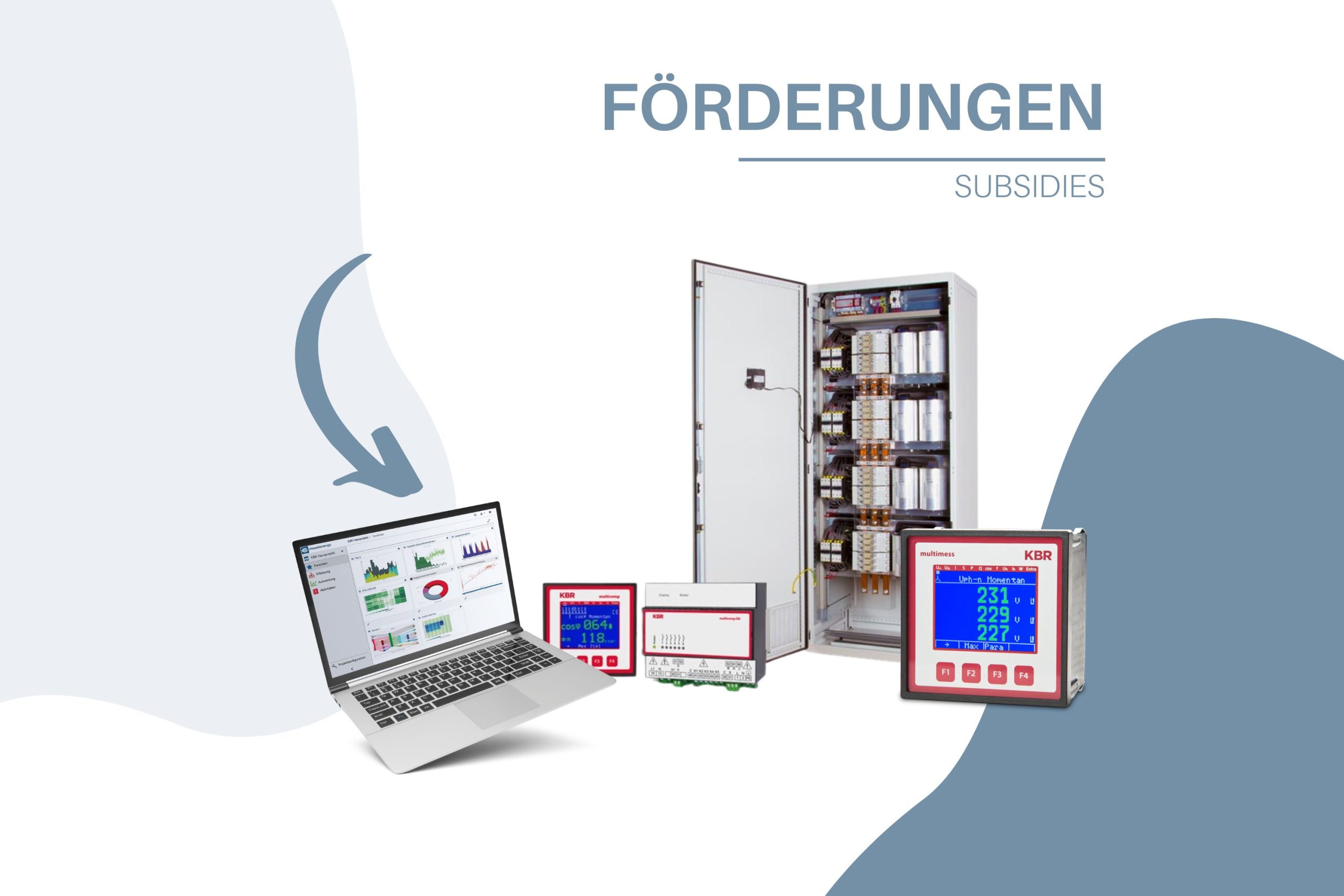Full-scale energy management

Energy management – what’s behind it?
Operational energy management – If we take the word apart, the meaning becomes clearer: “managing” embodies economically targeted actions. In the context of energy, this means using energy economically and preventing unnecessary energy consumption. Operational energy management therefore makes sense for any company that wants to use energy, such as electricity, gas or other media, more efficiently.
This not only reduces your energy costs and consumption, but also allows you to comply with your grid operator’s specifications and apply for improved grid usage conditions.
ISO 50001 – Standard for energy management systems
ISO 50001 is an international standard and the standard for energy management systems (EnMS). The standard aims to optimize energy use and efficiency through continuous improvements. It is designed to support companies in systematic energy management and is aimed at any organization regardless of its size.
In addition to the transparency of energy costs, the disclosure of potential energy savings and the reduction of CO2 emissions, it can also help to reduce taxes and levies.
Advantages through energy management
The use of an energy management system helps to increase energy efficiency in the company and achieve measurable energy savings in the long term. The most important arguments in favor of introducing an energy management system are:
- More transparency for energy flows and energy use
- Optimization of system technology
- Reduction of CO2 emissions
- Improved image through sustainable action
- Early detection of changes in energy consumption
- Energy cost savings and thus an increase in profit
- Prerequisite for legal relief
- and much more.
Rising energy costs make energy management a key discipline
The cheapest and most environmentally friendly kilowatt hour is the one that is not consumed.
How can we assess whether our energy costs are too high? When do we decide to take action? And what measures do we want to start with?
Questions upon questions that remain unanswered for many companies. Initial and detailed advice from an energy consultant, which is even subsidized by KfW Bank, can help here. However, the basis for this analysis is and remains measurement data on my consumption. When do I consume what amount of energy and where? Where are my inefficient energy guzzlers and the potentials of unnecessarily consumed energy?
This is where energy data management can help. A system of stationary measurement technology and the corresponding evaluation software that helps you to uncover your potential.
Furthermore, energy optimization can significantly reduce the power supply costs charged by the energy supplier. Your KBR sales engineer can determine your potential relatively easily.
Energy audit (DIN EN 16247) or energy management (ISO 50001)?
The EU Energy Efficiency Directive 2012/27/EU (EED) obliges aAll companies that are not small or medium-sized enterprises according to the EU definition of SMEs are required to carry out an energy audit (DIN EN 16247).
– If you do not have EMAS or ISO 50001 certification.
The energy audit report contains values such as:
- The energy consumption of the new reference year
- The distribution of energy to areas and individual consumers
- The untapped efficiency potential with economic evaluation
- Concrete recommendations for action and possible optimization measures
However, the energy audit does not include any obligation to implement the potential energy savings identified in the energy audit report.
Energy audit completed – what should be considered now?
Examination of the proposed measures
The first thing to do here is to implement the “low-hanging fruit”. Measures are often identified that can be implemented with little time or cost (e.g. reducing the compressed air level by 1 bar corresponds to approx. 6% energy savings).
For more complex measures, however, detailed investigations should be carried out by the relevant experts (e.g. conversion of an outdated heating system).
Continuous data acquisition
In order to be able to manage the data on energy sources and main energy consumers identified in the audit in the future or to check the effectiveness of the individual measures implemented, it is necessary to continuously record plausible data. The appropriate evaluation software visualizes the data and makes it comparable.
Energy audit or perhaps an energy management system?
According to the EDL-G, the energy audit must be repeated every 4 years. As an alternative to the energy audit, it is possible to introduce an energy management system in accordance with DIN EN ISO 50001 at a slightly higher financial and time cost.
The savings effects are significantly higher here, as a continuous improvement process for energy consumption is already in place in the system. This not only improves energy efficiency, but also competitiveness.
Energy audit - which companies are affected?
Energy audit according to DIN EN 16247
Your company is affected if:
- At least 250 employees (including affiliated companies)
- has an annual turnover of more than 50 million euros or an annual balance sheet total of more than 43 million euros
Energy management according to DIN EN ISO 50001
The introduction of an energy management system is basically voluntary; there is no statutory certification requirement. However, certification in accordance with DIN EN ISO 50001 (or a registered environmental management system in accordance with the EMAS Regulation) is a prerequisite in Germany for the partial exemption of particularly energy-intensive companies from the EEG levy and, in future, for the exemption of companies in the manufacturing industry from electricity and energy tax.
The Energy Efficiency Act
On 21.09.2023, the German Bundestag announced in an official press release that the Energy Efficiency Act had created a clear legal framework to promote energy efficiency. This important law has the declared aim of making a significant contribution to achieving Germany’s climate targets.
What was decided?
- Companies with an energy consumption of more than 7.5 GWh per year must establish an energy or environmental management system (EnMS).
- If the total energy consumption in the last three years is more than 2.5 GWh per year, then
to record energy efficiency measures in implementation plans and make them public. - The decision on the implementation of the measures is based on a profitability analysis in accordance with DIN EN 17463.
- Additional rules apply to data centers with regard to waste heat and renewable energies.
- Public facilities with an energy consumption of more than 1 GWh per year must have a
EnMS and achieve annual energy savings of 2 %.
How can the law be implemented?
- It is important to proceed in a targeted manner. The first step is therefore to draw up a list of measures
The EnMS is directly linked to the associated measuring points and values. - The large consumers should be considered first. These can be determined using an SEU list (Significant Energy User) from the energy data management system visual energy.
- visual energy offers comprehensive analysis options and the necessary flexibility to demonstrably
to become more efficient.
potentials enable more energy-efficient and thus more competitive operations, while at the same time
the final energy consumption is reduced.
KBR products and solutions for “managing”
Manage your energy by bringing transparency to your measurement data, optimizing controllable loads and regulating reactive power. With KBR products and solutions, we offer you a comprehensive energy management system:















